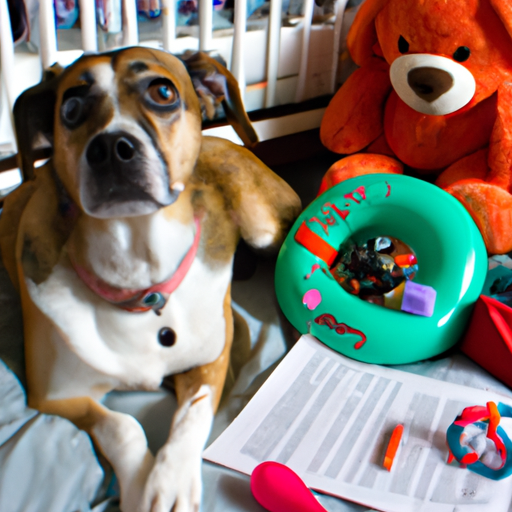Introduction
As a loving pet owner, you’re anxiously awaiting the arrival of your furry friend’s new puppies. But how can you tell when it’s time? The signs of labor in dogs can be subtle and vary between individuals. Let’s delve into the details and help you prepare for this exciting time.
Recognizing the Signs of Dog Labor
Drop in Body Temperature
Your dog’s body temperature will usually drop significantly 24 hours before labor begins. Normal body temperature for dogs is between 101 and 102.5 degrees Fahrenheit. When it drops below 100, get ready, because puppies are coming.
Nesting Behavior
Just like humans, dogs often exhibit nesting behavior when they’re close to giving birth. Your dog might start seeking out quiet, comfortable spaces, or begin hoarding soft materials like blankets or toys.
Loss of Appetite and Vomiting
It’s common for dogs to lose their appetite or even vomit in the 24 hours before labor begins. Don’t panic; this is a normal part of the process.
Understanding the Stages of Dog Labor
Dog labor is divided into three stages:
- Stage One: The cervix dilates, and contractions begin. You might not notice this stage, but you may see your dog become restless.
- Stage Two: This is when the puppies are born. You’ll see your dog’s abdomen contract and her straining. If she strains for longer than an hour without producing a puppy, call your vet.
- Stage Three: After each puppy, the placenta is delivered. Your dog might eat the placentas. It’s gross, but it’s natural!
When to Call the Vet
It’s crucial to know when to call the vet. Contact your vet right away if:
- Your dog has been pregnant for more than 65 days
- She has been having contractions for more than an hour without producing a puppy
- More than two hours pass between puppies
- She seems excessively tired or distressed
Frequently Asked Questions (FAQs)
Q: How long does dog labor last?
A: It varies, but it can last from a few hours to 24.
Q: How many puppies can a dog have?
A: It depends on the breed and size of the dog, but anywhere from one to 12 is normal.
Q: Should I stay with my dog during labor?
A: Yes, but keep a respectful distance and don’t interfere unless necessary.
Q: Can I help my dog deliver her puppies?
A: Only if necessary. If a puppy is stuck or your dog is struggling, you may need to assist. But in most cases, your dog will handle it on her own.
Q: What should I do after the puppies are born?
A: Make sure the puppies are nursing and that your dog is comfortable and hydrated. Check in with your vet to ensure everything went well.



